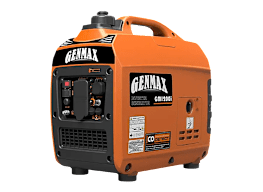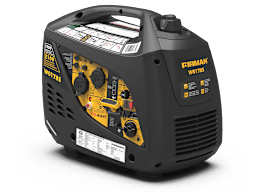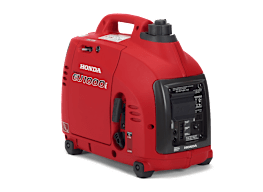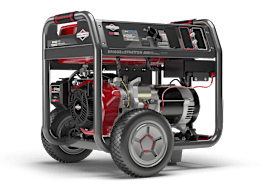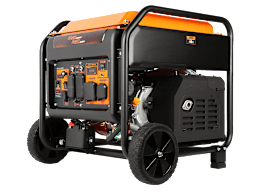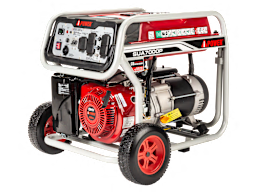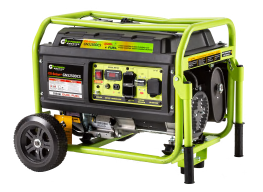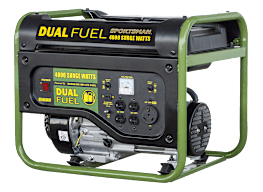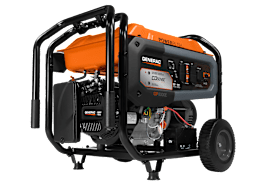Pros and Cons of Inverter Generators
These machines come at a premium price, but they run longer, quieter, and more efficiently than traditional generators
When you shop through retailer links on our site, we may earn affiliate commissions. 100% of the fees we collect are used to support our nonprofit mission. Learn more.
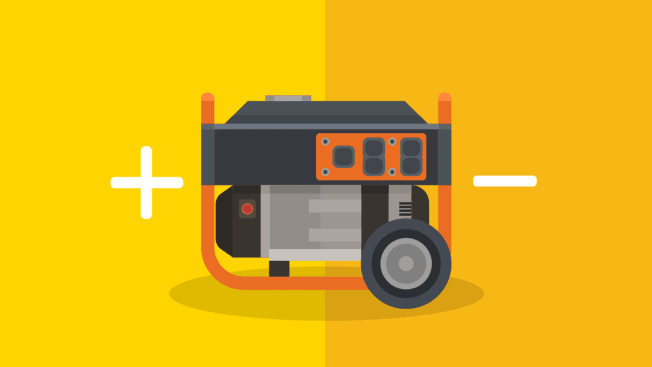
Inverter generators are a type of portable generator, with a twist.
When the electricity goes out, both inverter generators and traditional portable generators can power your home appliances and electronics, making the difference between a minor disruption in your life and a catastrophe. You set them up the same way, using gasoline as fuel and positioning them at least 20 feet from your home—never indoors—with the exhaust pointing away from your dwelling.
But inverter generators typically are far less noisy than traditional portable generators. If you’ve had to suffer through the din of a running portable generator, you can appreciate the value of that for your sanity.
Inverter generators have other distinct advantages—and one notable drawback. So it’s helpful to know how they work, what makes them unique, and why they might be a worthwhile purchase.
Is an Inverter Generator Worth It?
The main drawback of inverter generators is their price. Though prices have been coming down somewhat, these units are still typically pricier than traditional portable generators with a comparable claimed wattage—from a few hundred to a couple of thousand dollars more.
Are Inverter Generators Safer Than Other Portable Generators?
Carbon monoxide (CO) poisoning is a serious risk with all portable generators that aren’t used properly. Like other portables, inverter generators should only be used outside in an unenclosed area, at least 20 feet from your home, with the exhaust port pointing away from your dwelling.
To further reduce the risk of carbon monoxide poisoning, some new portable generators feature a built-in sensor that triggers an automatic shutoff if CO builds up to dangerous levels in an enclosed space. And some also have engines that emit less CO in the first place. The best generators come with both features.
Inverter generators are not inherently safer than other portable generators. Most of the inverter generators in our ratings have the automatic CO shutoff. But that’s also true of most of the traditional portable generators in our ratings.
You can best ensure your household’s safety by choosing a recommended model from CR’s inverter generator ratings. Only portable and inverter generators with the automatic CO shutoff can earn our recommendation, regardless of how well the models perform otherwise. (In 2020, CR expanded its safety tests to distinguish between generators that simply have these safety features and those we’ve found to be demonstrably safer in various scenarios.)
What Size Inverter Generator Should You Get?
To help you make better sense of your options, we break our inverter generator ratings into four groups:
1. Large Inverter Generators
Most large inverter generators in our ratings weigh from around 150 to around 300 pounds (wheels included). That’s too big to haul along to a tailgate party but big enough to power your house. They generate 5,000 watts of power or more (at 220 volts).
This category of inverter generator can be connected directly to your electrical panel with a safety device called a transfer switch, which CR strongly recommends. That allows the generator to power entire circuits in your home rather than having to plug in individual electronics with extension cords.
2. Midsized Inverter Generators
These weigh 80 pounds or more and might come with wheels. They produce 2,500 to 5,000 watts but don’t allow the recommended option of connecting to an electrical panel with a transfer switch. Instead, you plug appliances or electronics directly into the generator, which can be dangerous if you don’t follow certain safety guidelines.
This size is well suited for users of recreational vehicles. These models put out all the power you need for plug-in appliances like a toaster or microwave, and they’re light enough to unload and carry away to a safe distance from your RV before use.
3. Small Recreational Inverter Generators
Models of this category of our ratings generate 1,500 to 2,500 watts. That’s enough to be a steady source of basic backup power for a fridge, some lights, and a phone charger—but not much else. These units can’t be connected to a circuit breaker panel or used to power any device that doesn’t have a standard two- or three-prong plug. But you can link multiple inverter generators together with a special cable to combine their output.
Many small recreational inverter models come with user-friendly features such as fuel-level indicators; some come with wheels. But these units typically weigh between 50 and 60 pounds, and are designed to be carried with one hand.
4. Compact Inverter Generators
You can plug two small appliances directly into the compact inverter generators in our ratings. They produce around 1,000 watts, enough power for tailgating or camping. These units lack convenience features like fuel gauges or standard wheels. With weights between 30 and 40 pounds, though, they’re designed for convenient, one-hand carrying.
Don’t let the small size of these units lull you into thinking you can bring them inside safely, however.
“Even a smaller generator can emit hazardous levels of CO in an enclosed space, so make sure you get a unit with CO safety technology and follow placement guidelines,” Kollontai says.


Our generator buying guide is a great place to get the lay of the land, and our full generator ratings will let you compare specific models. CR members can read on for ratings and reviews of four top-performing inverter generators, one each from the four sizes we test.

















